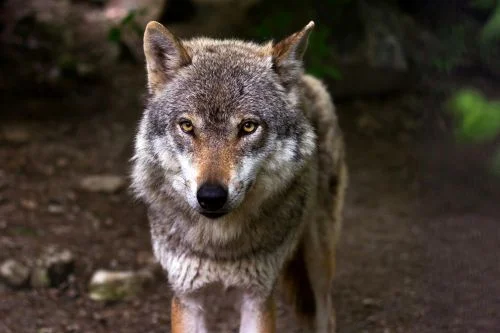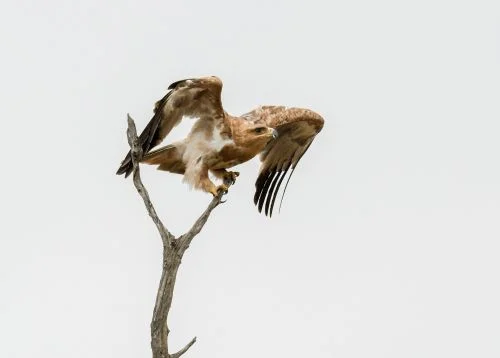
Wildlife of european forests to discover while hiking
Setting off to hike through Europe’s forests means immersing yourself in a living, mysterious, and captivating world. From the boreal expanses of Scandinavia to the ancient beech woods of Central Europe, through Mediterranean oak groves and the towering Alpine ranges, every trail tells the story of rich ecosystems where wildlife plays a vital role. For curious hikers, every step can become a meeting with the wild — provided you know how to observe, listen, and respect.
From the very first meters on a humus-covered path, the atmosphere shifts. The scent of damp earth, the crack of branches underfoot, and the chorus of birds weave a natural symphony. Forests we often imagine as silent are in fact teeming with life. Yet to glimpse their inhabitants, you must move at their pace — slow down, blend in, and stay patient. The reward? Encounters with iconic animals at the very heart of Europe’s ecosystems.
The Great Mammals, Stars of Europe’s Forests
Among the most striking encounters, the red deer holds pride of place. Majestic and towering over one and a half meters at the shoulder, it thrives in deciduous forests and clearings across the Alps, the Vosges, Poland, and Romania. In autumn, its powerful rutting calls echo through the woods, creating a unique atmosphere that draws photographers and nature lovers alike. More discreet but equally elegant, the roe deer frequently ventures along forest edges and meadows. Its nimble silhouette and distinctive barking cry often reveal its presence before you spot it.
Farther north, in the damp forests of Scandinavia and the Baltic states, the mighty moose impresses with its massive frame and wide palmate antlers. Rare and shy, it remains a near-mythical sighting for Finnish and Swedish hikers.
The wild boar, widespread from France’s Landes to the Carpathians, fascinates with its nocturnal habits. You’ll often notice its “rootings” — patches of upturned soil where it digs for acorns, roots, and worms. Encounters are usually brief; boars avoid humans, but a sow defending her piglets can charge. Calm and distance are crucial in such moments.
In remote areas, other great predators are returning. The gray wolf, long eradicated, is recolonizing the Alps, the Vosges, the Apennines, the Carpathians, and parts of Central Europe. Extremely wary, it rarely shows itself, but its paw prints or haunting night howls reveal its comeback. The brown bear, still present in Romania’s Carpathians, the Tatras, and a few valleys of the Pyrenees, remains a rare and moving encounter — but one that demands strict safety rules: keeping distance, never feeding, and avoiding surprise contact.
Secretive but Fascinating Carnivores
The red fox, opportunistic and highly adaptable, is perhaps the most familiar carnivore to hikers. Its fiery coat and bushy tail sometimes light up forest edges at dusk. Less well-known but just as intriguing, the European badger lives underground in complex multi-entrance setts. Mainly nocturnal, it leaves behind well-worn paths and visible burrow openings that signal its presence.
Even more elusive, the Eurasian lynx — ghost of the great coniferous forests — remains almost invisible. This solitary cat, with its black ear tufts and snowshoe-like paws, is slowly reclaiming parts of the Alps and the Jura. Spotting one is nearly impossible; its broad paw prints are usually the only clue.
High in the canopy, the pine marten moves with extraordinary agility, hunting rodents and birds. Its slim body and bright yellow throat patch distinguish it from the more urban stone marten.
A Spectacular and Resonant Birdlife
One of the greatest joys of forest hiking is simply listening. Woodpeckers — great spotted, black, and green — hammer on tree trunks in search of insects, their rhythmic drumming carrying far. The vibrant Eurasian jay, with its blue and brown plumage, acts as the forest’s sentinel, loudly warning all of an approaching hiker. Ecologically vital, it helps regenerate oak woods by burying and forgetting acorns.
When night falls, the soundscape changes. The tawny owl haunts old-growth woods with its deep hoots, while the long-eared owl echoes eerily through the darkness. In the mountains, it’s worth looking up to admire the golden eagle soaring majestically or the black kite gliding above clearings.
Small but Essential Forest Creatures
Europe’s forests are also alive with smaller, captivating animals. Red squirrels leap from branch to branch, curious yet cautious, sometimes dropping a pine cone at your feet. Their hidden food caches play a key role in forest regeneration. The peaceful hedgehog patrols the undergrowth at night, feeding on insects and slugs.
After rainfall, fire salamanders emerge, their glossy black bodies marked with bright yellow spots — a natural warning of their mild toxicity to predators. Their presence signals a healthy, moist habitat. Even more discreet, the European beaver, once nearly extinct, is returning to colonize forest rivers and ponds. Its dams, lodges, and cone-shaped tree stumps reveal its nocturnal work.
Among reptiles, the adder (common viper) enjoys sunny forest edges. Its bite is rarely fatal but requires caution — sturdy boots and awareness are wise when crossing tall grass or rocky paths.
How to Observe Wildlife Without Disturbing It
Successful wildlife encounters depend above all on your behavior. Move slowly, talk little, and listen carefully. Avoid sudden noises: step lightly, sidestep dry twigs, and pause often. Waiting quietly for a few minutes allows animals to relax and resume their normal activities. Binoculars are invaluable for enjoying details without getting closer, and earth-toned clothing helps you blend into the surroundings.
Respect is essential: never feed wild animals. Human food disrupts their natural diet, causes dependency, and can trigger dangerous behavior. Don’t approach young deer or wild boar piglets — mothers are nearby and may attack or abandon their young out of fear. Stay on marked trails, especially during breeding seasons or in areas flagged as sensitive.
Where to Hike for the Best Wildlife Encounters
Europe is full of parks and reserves that combine discovery with conservation. In France, the Vosges, Cévennes, and Pyrenees teem with life. In Germany, the Black Forest and Bavaria are havens for deer and woodpeckers. Poland and Slovakia protect wild habitats in the Tatras and Carpathians, where bears and wolves still roam. Finland and Sweden’s deep woods are perfect for spotting moose and capercaillie.
More and more regions now offer wildlife hides and guided nature walks, making it easier to watch deer, bears, or raptors safely and ethically.
The Deeper Reward of Hiking with Wildlife
Beyond photographs and fleeting excitement, respectful observation builds a profound connection with nature. Each muddy track, each owl’s call, each rustle in the leaves tells part of the forest’s hidden story. Learning to read these signs enriches the hiking experience and strengthens ecological awareness.
Hiking Europe’s forests is also a way to protect them. By respecting local rules, supporting natural parks, and sharing responsible images and stories, every hiker becomes an ambassador for biodiversity.
Conclusion: Walk Humbly, Observe Attentively
Discovering Europe’s forest animals turns a simple hike into a true encounter with wilderness. Majestic deer, elusive wolves, vibrant birds, and secret amphibians all reveal the continent’s fragile natural wealth. Moving quietly, keeping a safe distance, and respecting their world ensures not only unforgettable experiences but also the long-term preservation of these creatures and their habitats — so Europe’s forests can keep thriving under the careful steps of future hikers.









